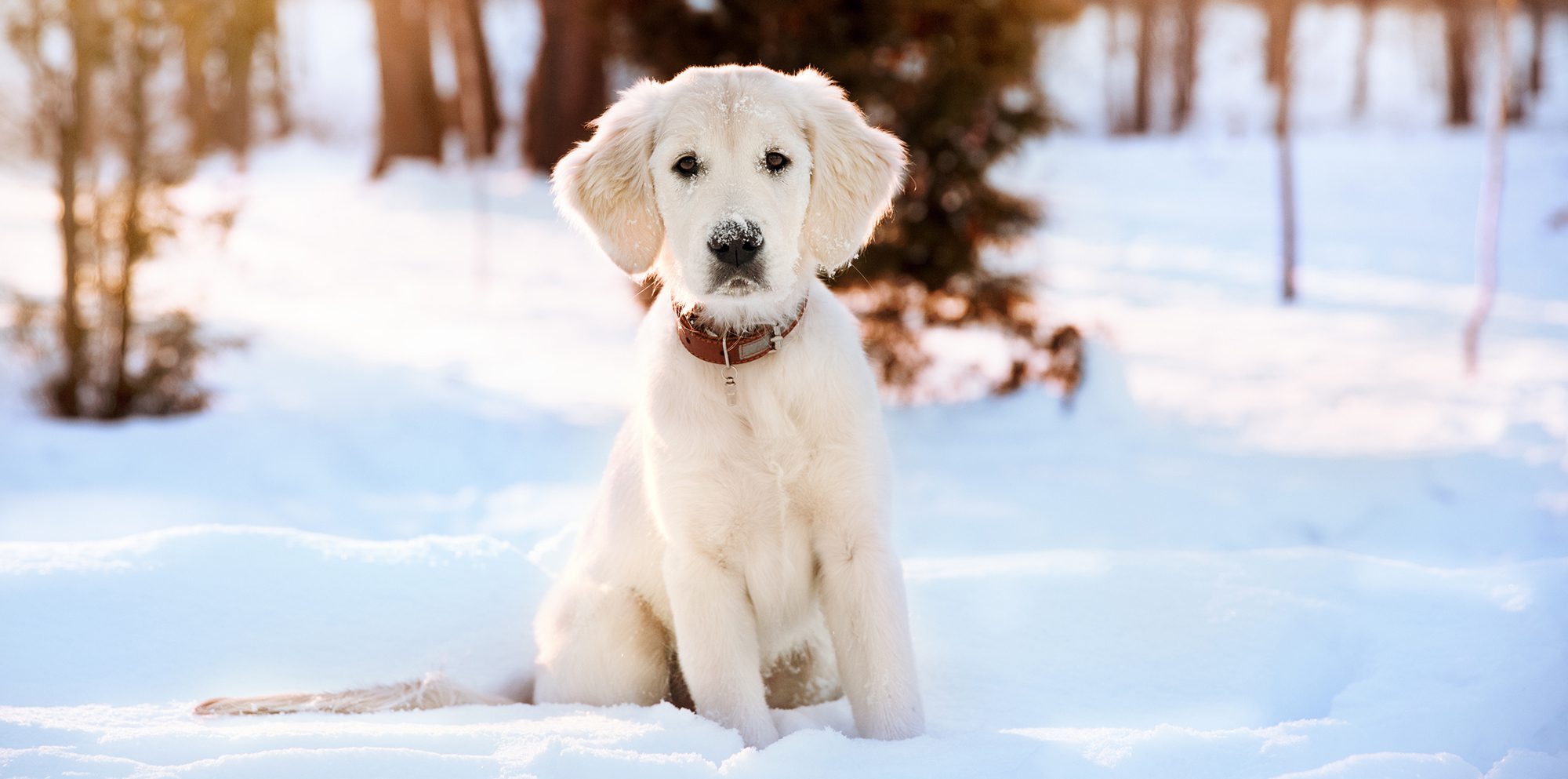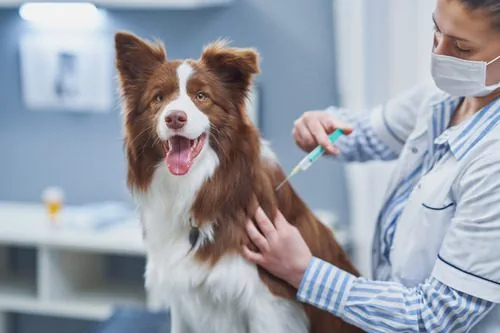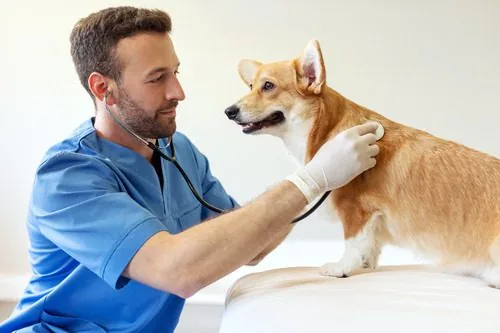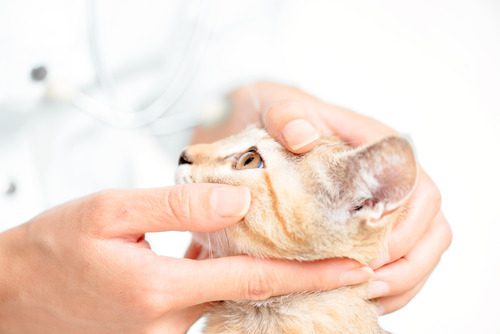Frostbite on Dog Paws: The Signs and How to Prevent Them in Saratoga Springs, NY
While we tend to think our dogs have some degree of protection against the cold due to their fur coats, most dog breeds are not adequately suited to bitter cold conditions (no dog, regardless of breed, should be left outside unattended in freezing weather!), and their paws, ears, nose, and tail are especially vulnerable to frostbite. Once the temperature drops below freezing (32 degrees Fahrenheit), frostbite becomes a potential risk for your pet.
In our Saratoga Springs, NY, animal hospital‘s article below, we’ll discuss the signs of frostbite in dogs and what to do if you suspect that your pet has frostbitten paws. While frostbite on a dog’s paws, ears, nose, or tail is not fatal, it could leave lasting effects.

What Causes Dogs to Get Frostbite on Their Paws?
It may seem like a simple question to answer—if it’s too cold outside, your dog’s paws could become frostbitten. But there is more to it than that.
Some dogs can withstand cold winter temperatures better than others. Huskies and Malamutes were bred to handle cold climates, but even they can become vulnerable to frostbite if they are exposed to the cold for too long. Dogs that can withstand the cold for the least amount of time include small, thin-haired dogs (such as Yorkies and Silky Terriers), senior dogs, and puppies.
Leaving a dog unattended out in the cold is the surest way for them to get frostbitten paws. However, dogs that are outside with their owners may develop frostbite as well, if they spend a lot of time out in the cold, are damp from rolling around in the snow, and lack any kind of protection on their paws.
It’s important to never take a “typical” cold winter’s day for granted. If you can’t spend more than a few minutes outside before you start shivering, then your dog should not be kept outside for long, either.
Signs of Frostbite on a Dog’s Paws
If your dog has been out in the cold for what you would consider a long time, take a moment to check their paw pads for the following signs:
- Swelling of the pads
- Pale/grayish discoloration
- Blisters or ulcers
- Dead and/or blackened skin
- Swelling and pain (a good sign of pain is if you touch your pet’s paws, and they jerk away, cry out or act aggressive)
You should also check your dog’s paws if they appear to be limping, are licking their paws frequently, or seem to be in pain (walking gingerly, holding up a paw).
Treating Frostbite in Dogs
If your dog has any evidence of frostbite on their paws or other areas of the body, consider it an emergency and contact our hospital, or your nearest emergency hospital, immediately. Do not attempt to rub your pet’s paws or apply ointment.
Instead, keep your pet as warm as you can between leaving the house and bringing them to the vet. Pain relievers and antibiotics may likely be prescribed to your dog to ease their pain and prevent infection of the frostbite wounds.
Protecting Your Dog from Frostbitten Paws
While keeping your pet out of the extreme cold is the most effective way to protect them from frostbite, there are other things you can do to minimize their risk, including:
Suit Up
Dressing your dog in a winter jacket or sweater in their size, along with dog booties to protect their paws (a jacket and booties are not substitutes for staying safe and warm indoors, but they can lower your dog’s risk for frostbite)
Pay Attention
Always supervise your dog while they’re outside in cold weather and bring them in as soon as they’ve finished their business
Less During Winter
Shorten their walks and other outdoor activities (frostbite can start setting in within 30 minutes)
No Wet Fur Before Heading Out
Make sure your pet is dry before they go outside (ex. they just had a bath), as a damp coat can increase their risk for frostbite
When in doubt, be cautious and keep your pet indoors as much as possible to limit their exposure to the cold
Do You Have Questions About Frostbite and Your Dog?
Our animal hospital in Saratoga Springs, NY, is all too familiar with cold winters and the effects they can have on our pets after just a short time outside. Never take our harsh winter conditions for granted, and always remember to put your pet’s safety first!
If you have any questions related to frostbite and your dog, contact Saratoga Veterinary Hospital at (518) 587-3832!
Recent Posts
Lyme Disease Vaccines for Dogs
Lyme Disease Vaccines for Dogs Protecting your dog from Lyme disease is an essential step in supporting…
Kennel Cough Vaccine
Kennel Cough Vaccine Kennel cough is a highly contagious respiratory condition that can affect dogs of all…
What Is the Pet Insurance Waiting Period?
What Is the Pet Insurance Waiting Period? When you decide to invest in pet insurance, you may…
How Does Pet Insurance Work?
How Does Pet Insurance Work? Understanding how pet insurance works can help you make informed decisions about…
Cat Conjunctivitis: Should You See the Vet for Feline Pink Eye?
Cat Conjunctivitis: Should You See the Vet for Feline Pink Eye? Cat conjunctivitis, commonly known as feline…
About Saratoga Veterinary Hospital
Saratoga Veterinary Hospital is proud to serve as your local veterinarian of choice in WIlton, NY and the surrounding areas. Since its founding in 1973 by Dr. Sofarelli, our animal hospital’s main goal has been to strengthen the human-animal bond with exceptional veterinary medicine and client services.







